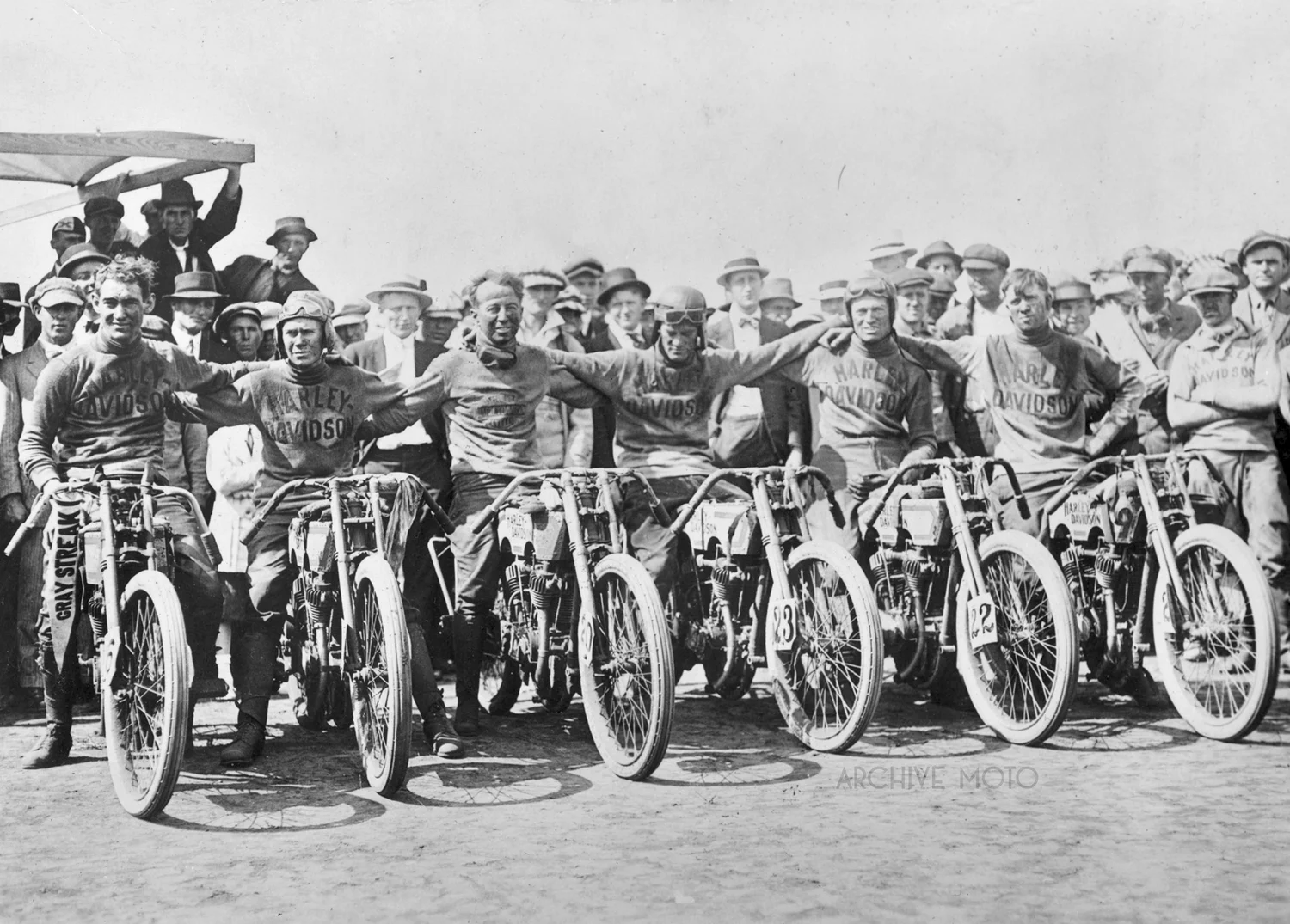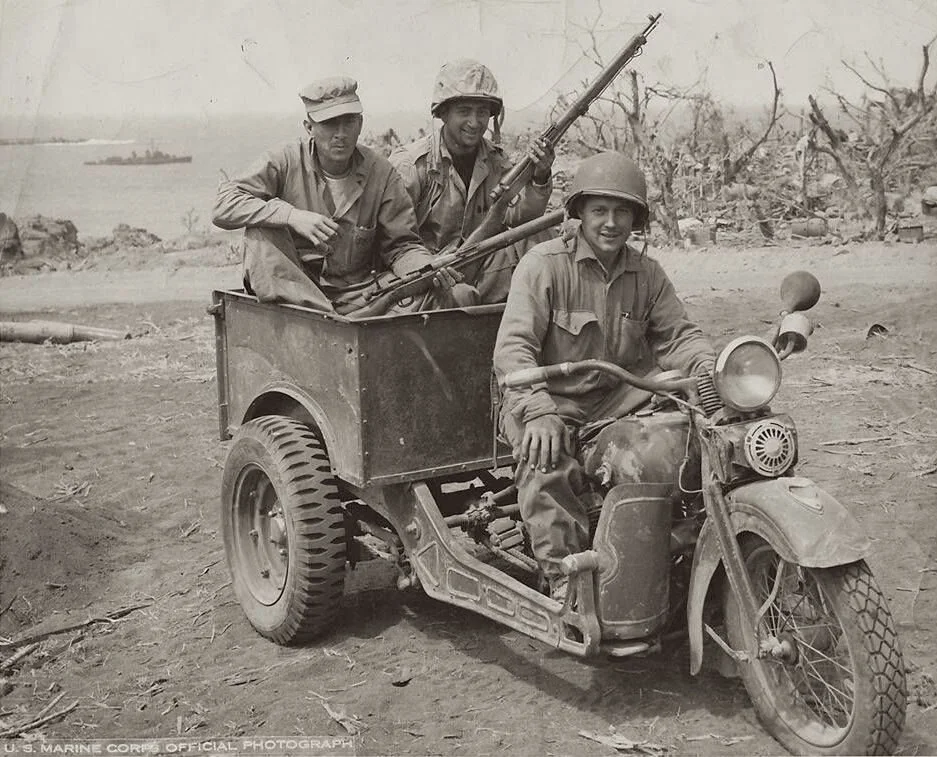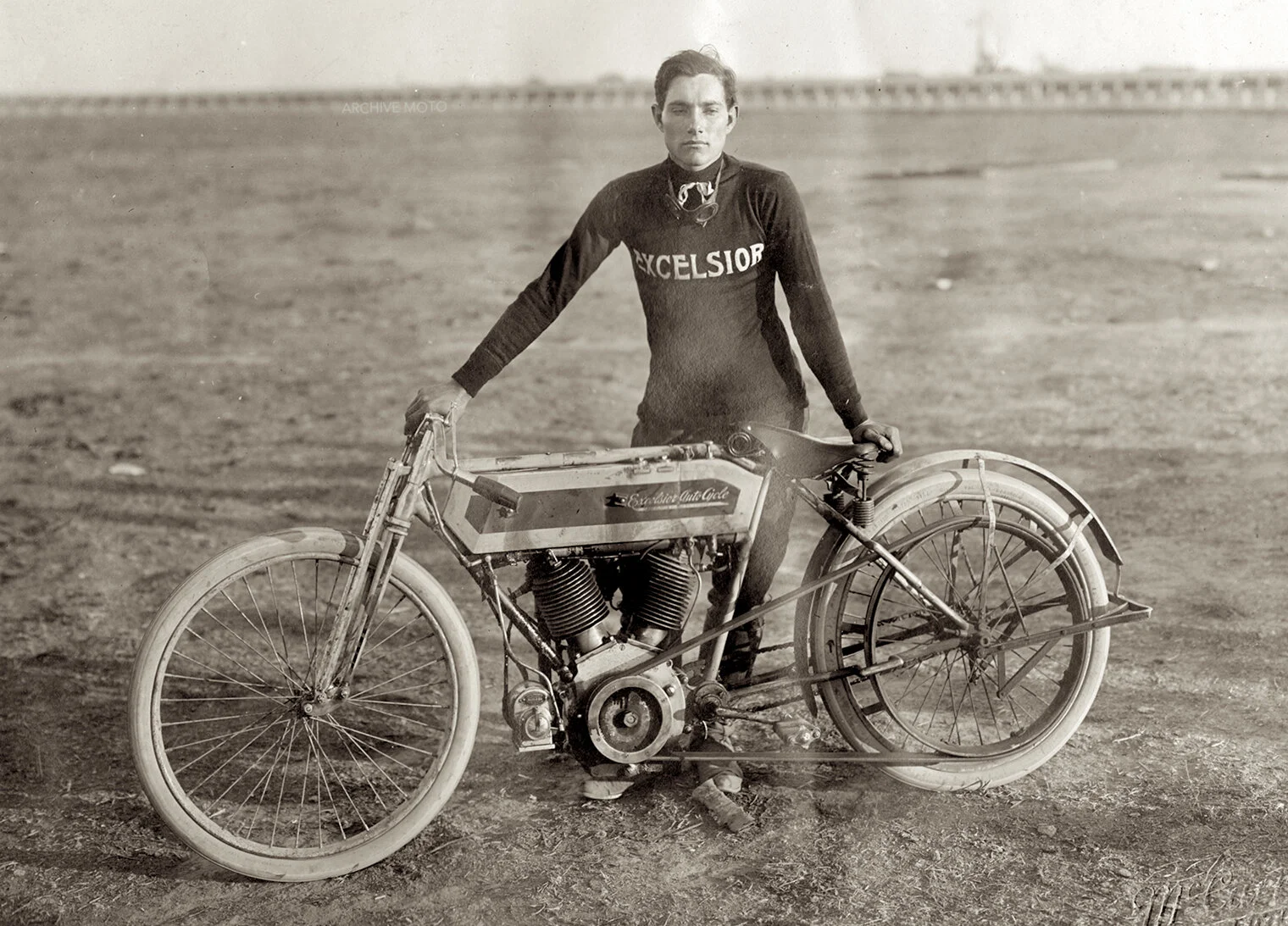The three Devil Dogs pose onboard one of the Japanese produced Harley-Davidson VL models, a remnant of the Japanese/Harley licensing deal brokered during the dire days following the crash in 1929. Tens of thousands of these sturdy side-valve Milwaukee v-twins were produced in the 1930’s by the Sankyo Company under licensed blueprints, tooling, and branding sold to them by Harley-Davidson. Following a falling out between the two companies in 1936 however, the machines were rebranded as Rikuo and sold without license through the outbreak of WWII, and again for a period following the war. There were also a number of VL clones produced in those years, many which incorporated this more industrial utility-trike chassis by the Aikuo, Toko Kogyo, SSD, and Kurogane companies.
The following is an original account Frank Richardson Pierce, the official referee in charge of the 24-Hour Record set by Wells Bennett on Memorial Day, 1922 as printed originally in Motorcycling and Bicycling magazine. On May 30-31, 1922, Bennett traveled a record of 1,562.54 miles in a 24 hour period at the 2 mile long board track speedway in Tacoma Washington onboard his stock Henderson DeLuxe 4 cylinder motorcycle. His 24-hour record set in Tacoma would stand unbroken for 15 years. Later in 1922 Bennett piloted the very same Henderson DeLuxe to a new record on the 1,650 mile Canada to Mexico Three Flag Dash, making the trip in 43 hours that September. The very next month, in October 1922, Bennett again rode his trusty Henderson 4 across the country, covering the 3,400 mile trip from Los Angeles to New York in a new record time of 6 days, 15 hours, and 13 minutes. The thousands of miles Bennett covered onboard this Henderson DeLuxe in 1922 alone earned him his place as one of the greatest cross country motorcyclists of all time.
The sense of freedom, adventure, and uncut joy that comes standard to every kid when they first throw their leg over a bicycle is something rarely matched in life, if ever. It truly is one's first taste of sovereignty, the ability to create and control your own experience, interact with and expand the world around you on your own terms, and live within the thrills and meditations of the moment. Imagine how amplified those same feelings must have been in 1900 when the world didn't expand endlessly on screens forever in hand but was instead limited to the tangible, immediate proximity. For a child, books and imagination could take you far, but the real world ended at the horizon. The bicycle, very much the revolution of the day at the turn of the 20th Century, offered a chance to push that boundary ever farther, for as far as one was willing to pedal. For a skinny boy in Wichita, the bicycle became the center of his world; it became a passion that would shape the life of an American motorcycling icon.
Elvin Austin Shoemaker, an amateur trade rider from Sacramento, California, posing with his race-configured 1911 Excelsior Auto-Cycle Model G. The 19-year-old Shoemaker was a sales clerk at Sacramento's Excelsior dealership, William A. Langley's capital for all things motorcycle in Northern California at the time. The young clerk had just won the Sacramento Motorcycle Club's 5-mile championship race at Agriculture Park on October 21st, 1911. Shoemaker jockeyed his stripped-stock Excelsior twin around the dusty trotting track at an average speed of 55 mph, taking the amateur championship prize as well as a third-place finish in the stock twin race. His mount was the latest release from the Excelsior Supply Company, their first twin-cylinder offering, and their last machine under the companies founding owners. A deal was struck only days before, handing over the fledgling Excelsior brand to bicycle magnate Ignaz Schwinn, a steal at only $500,000.





